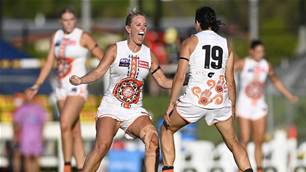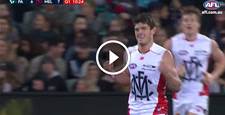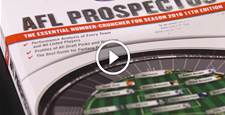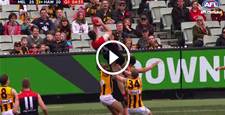The AFL's never been afraid of interchanging an idea straight out of left-field. Especially if it's an idea so crazy it just might work.
AFLX is a new competition format for Australia's largest sport, and is a bit like Twenty20 cricket or Fast4 tennis, or any other sport designed for the new-age punter without an attention span.
It's a bit like a rugby-AFL hybrid, although exactly how it's going to work is anyone's guess.
It's rugby in the sense that it's played on a rectangular field, AFL because it's got AFL in the name, and a hybrid in the sense that it could be about as popular among rusted-on footy lovers as a Toyota Prius.
Will it catch on?
AFLX promises to have two halves of 10 minutes and only seven players on the field per side.
At best, it could be a catchy, energetic summer sport and at $30 for a family ticket, a cheap night out. At worst, it could be a complete debacle, but we'll reserve judgement for now.
The AFL boffins have clearly done some market research before instigating this, and they would have found out what every other sport has. People want more pyrotechnics, flashing lights, DJ's and thumping techno with their sport.
Purists call it crass. Everyone else calls it entertainment.
The low-down
The first match will kick off February 15 in Adelaide, with further matches taking place in Melbourne and Sydney, featuring the full set of AFL clubs.
AFL General Manager of China and Project Manager for AFLX Dave Stevenson said fans would experience the unexpected at the upcoming AFLX tournaments.
“The 2018 AFLX tournaments promise to be a great family experience to enjoy with non-stop action exciting fans of all ages,” Mr Stevenson said.
“AFLX will provide a different experience for fans and will see plenty of action with fireworks, DJs, in game commentary, roving performers, kids and family zones and giveaways a feature at all events.”
Here's a run down of the rules.
1. Played on a rectangular field (approx. 70m width x 110m length) with four posts at each end (as per a normal AFL field). Ground markings will showcase X as the centre square and 40m arcs.
2. Two field umpires, two boundary umpires and one goal umpire at each end of the ground.
3. Ten players per team, seven on field at all times and three on the interchange bench. No restrictions on player rotations.
4. 10-minute quarters or halves depending on the tournament format.
5. Free kick against for last touch out of bounds.
6. Kick-ins from behind the goal line after all scores.
7. No marks paid for backwards kicks (except in forward 40m area).
8. Quarters commence with a ‘ball up’ in the centre and at least two players from each team starting inside the 40m arc.
9. Free shot from forward 40m arc – directly in front for deliberate rushed behinds.
10. 10-point super goals when goals kicked on the full from outside the 40m arc.
Related Articles

Socceroo star's message to kids: Don't be an AFL player

Updated: AFLW Round 2 preview and schedule













